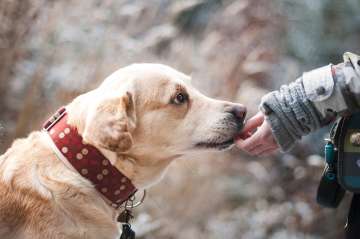Did you ever think how your canine friends are able to read your facial expressions, understand the tone of your voice? It turns out that they use different parts of their brains to process negative and positive human emotions. A recent study has revealed this fact.
According to the study, by living in close contact with humans, dogs have developed specific skills such as picking up on emotional cues contained in a person's voice, body odour and posture, as well as reading faces, that enable them to interact and communicate efficiently with people.
The finding showed that dogs tend to turn their heads to the left when they feel human faces expressing anger, fear or happiness. The reverse happened in case surprised expressions, possibly because they view it as a non-threatening, relaxed expression.
"Clearly arousing, negative emotions seem to be processed by the right hemisphere of a dog's brain, and more positive emotions by the left side," said Marcello Siniscalchi from the University of Bari Aldo Moro, Italy.
In the study, published in the journal Learning and Behavior, the team presented photographs of the same two adults' faces (a man and a woman) to 26 dogs who were being fed.
The images were placed strategically to the sides of the animals' line of sight and the photos showed a human face expressing one of the six basic human emotions: anger, fear, happiness, sadness, surprise, disgust or being neutral.
The team found that the dogs showed greater response and cardiac activity when shown photographs that expressed arousing emotional states such as anger, fear and happiness.
They also took longer to resume eating after seeing these images. The dogs' increased heart rate indicated that in these cases they experienced higher levels of stress.
The findings, therefore, supported the existence of an asymmetrical emotional modulation of dogs' brains to process basic human emotions, the researchers explained.
(With IANS Inputs)
